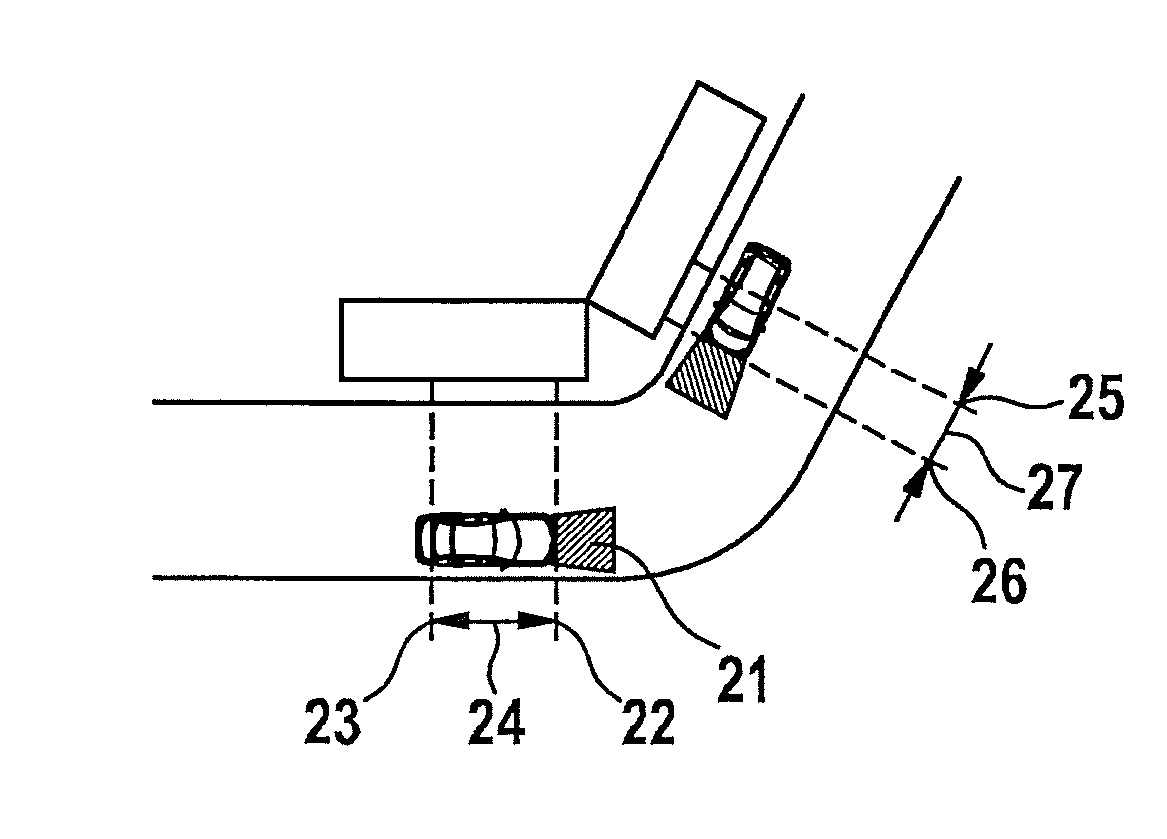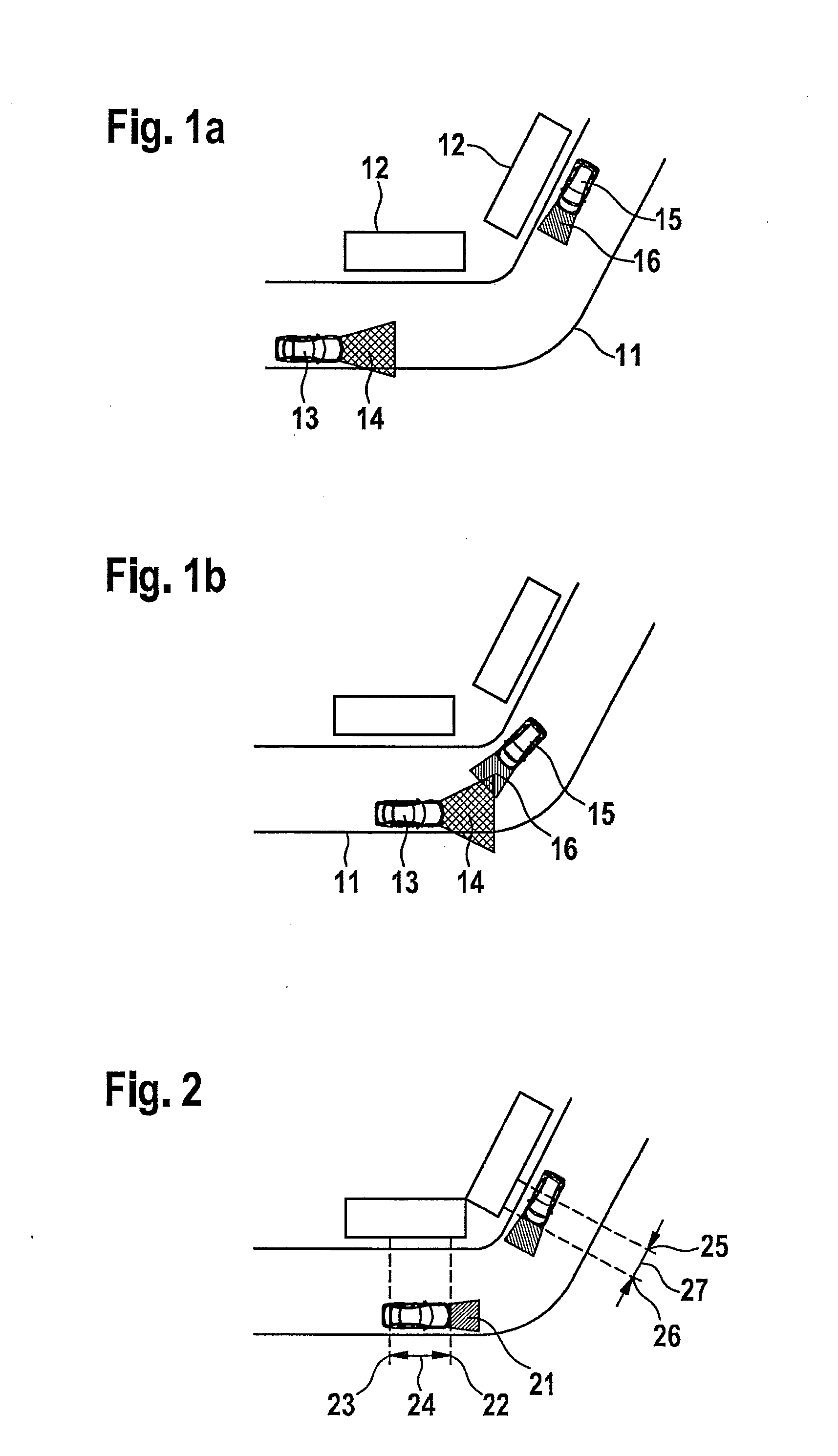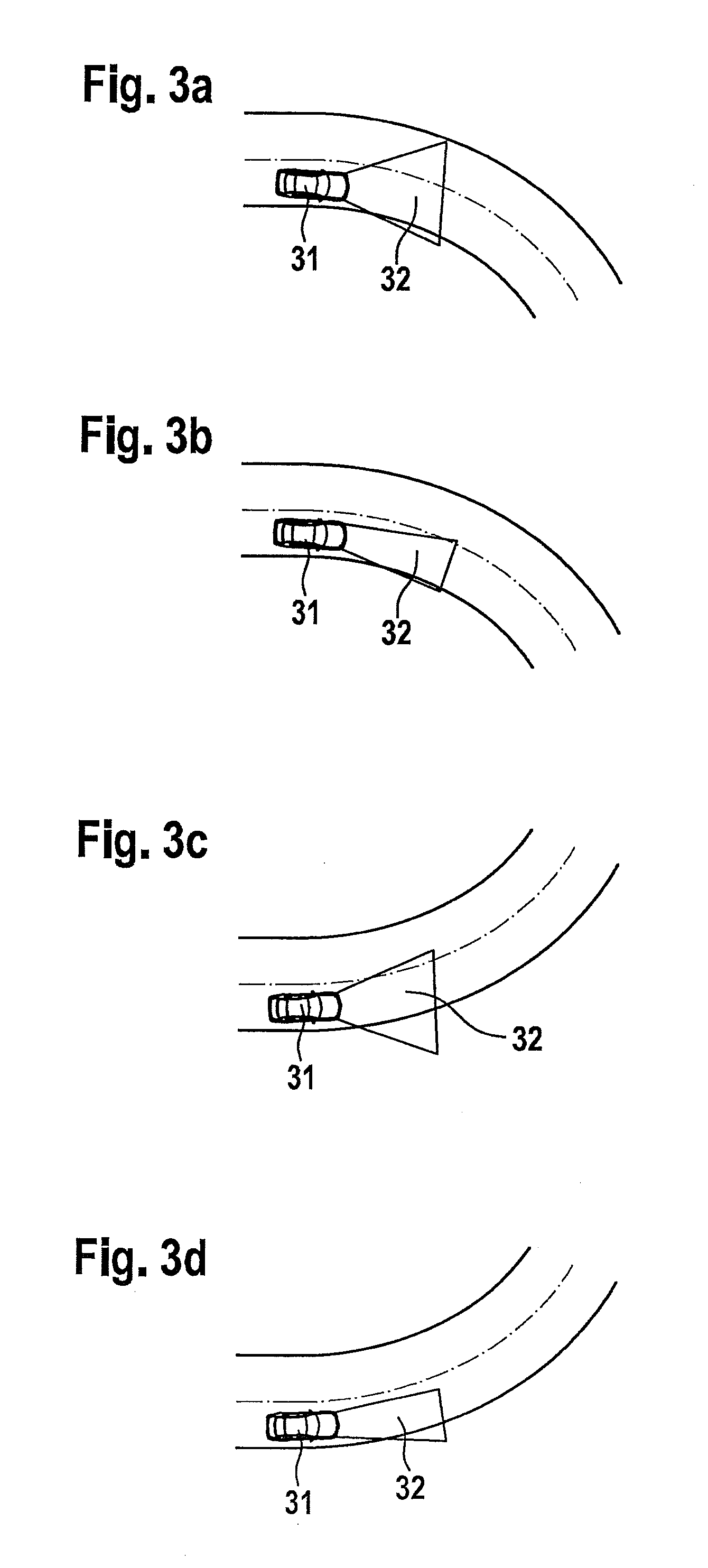Device and method for adjusting the lighting of a vehicle in blind curves
- Summary
- Abstract
- Description
- Claims
- Application Information
AI Technical Summary
Benefits of technology
Problems solved by technology
Method used
Image
Examples
Embodiment Construction
[0044]FIG. 1a shows a scenery of a road 11, in which one's own vehicle 13 is located, which emits a light cone 14 with high beam light and may not yet see, because of vision-obstructing building 12, that another vehicle 15 having a (in the illustrated case) low-beam light cone 16 is oncoming. If the vehicles move toward one another, at a later point in time, as shown in FIG. 1b, the light cone of the high beam light of one's own vehicle 14 will subject the vehicle or the driver of vehicle 15 to glare.
[0045]FIG. 2 describes how the method remedies the problem from FIG. 1. At a location point 23, the high beam light of one's own vehicle is already deactivated for this purpose, this point 23 being located at a configurable distance 24 before the apex or starting point of curve 22. At point 23, the high beam light is switched over to low beam light 21. The high beam light may be reactivated or the adjustment may be canceled out already before the end of curve 25 at a configurable distan...
PUM
 Login to View More
Login to View More Abstract
Description
Claims
Application Information
 Login to View More
Login to View More - R&D
- Intellectual Property
- Life Sciences
- Materials
- Tech Scout
- Unparalleled Data Quality
- Higher Quality Content
- 60% Fewer Hallucinations
Browse by: Latest US Patents, China's latest patents, Technical Efficacy Thesaurus, Application Domain, Technology Topic, Popular Technical Reports.
© 2025 PatSnap. All rights reserved.Legal|Privacy policy|Modern Slavery Act Transparency Statement|Sitemap|About US| Contact US: help@patsnap.com



